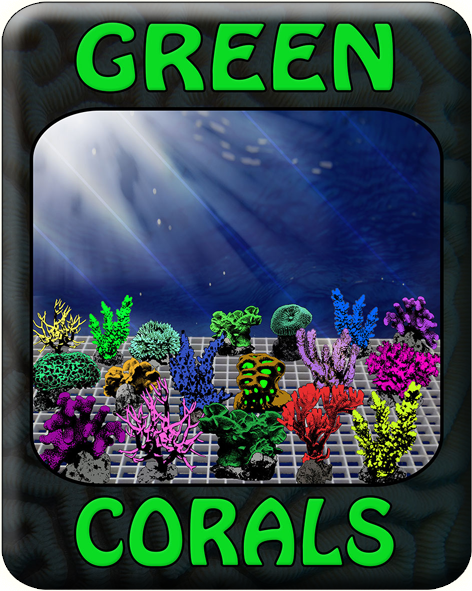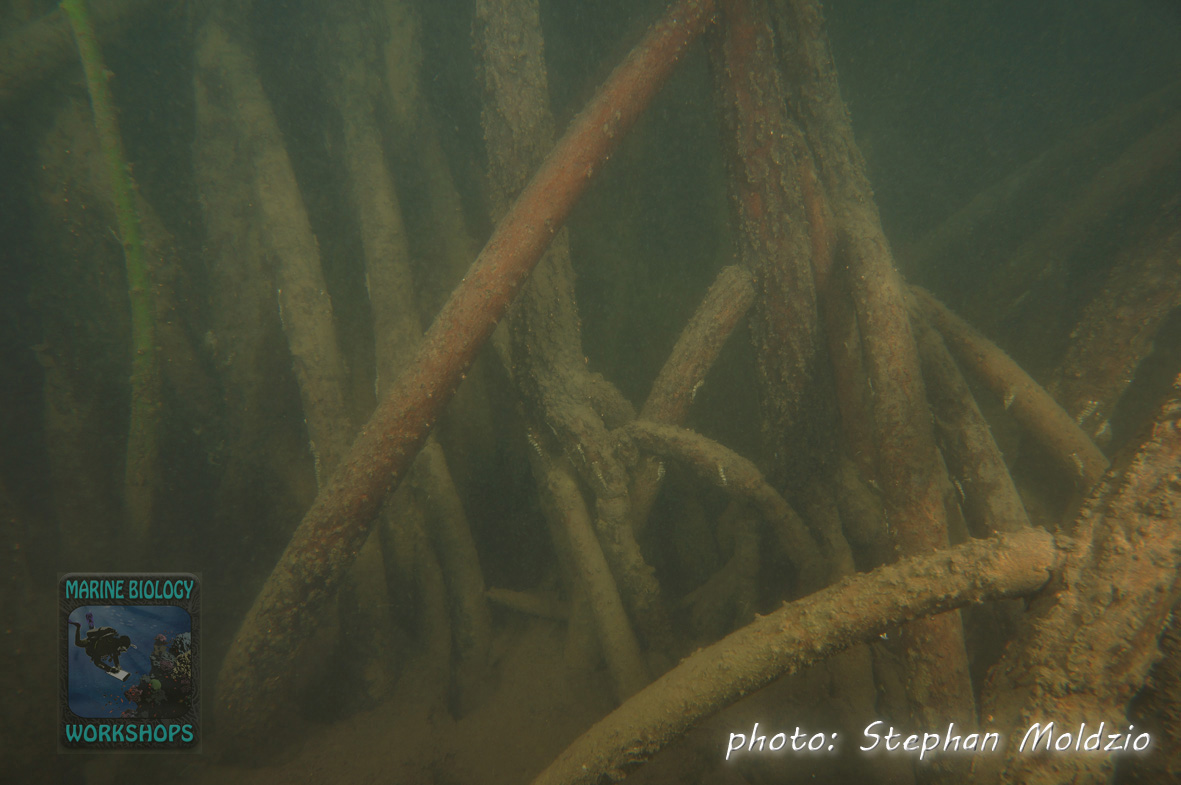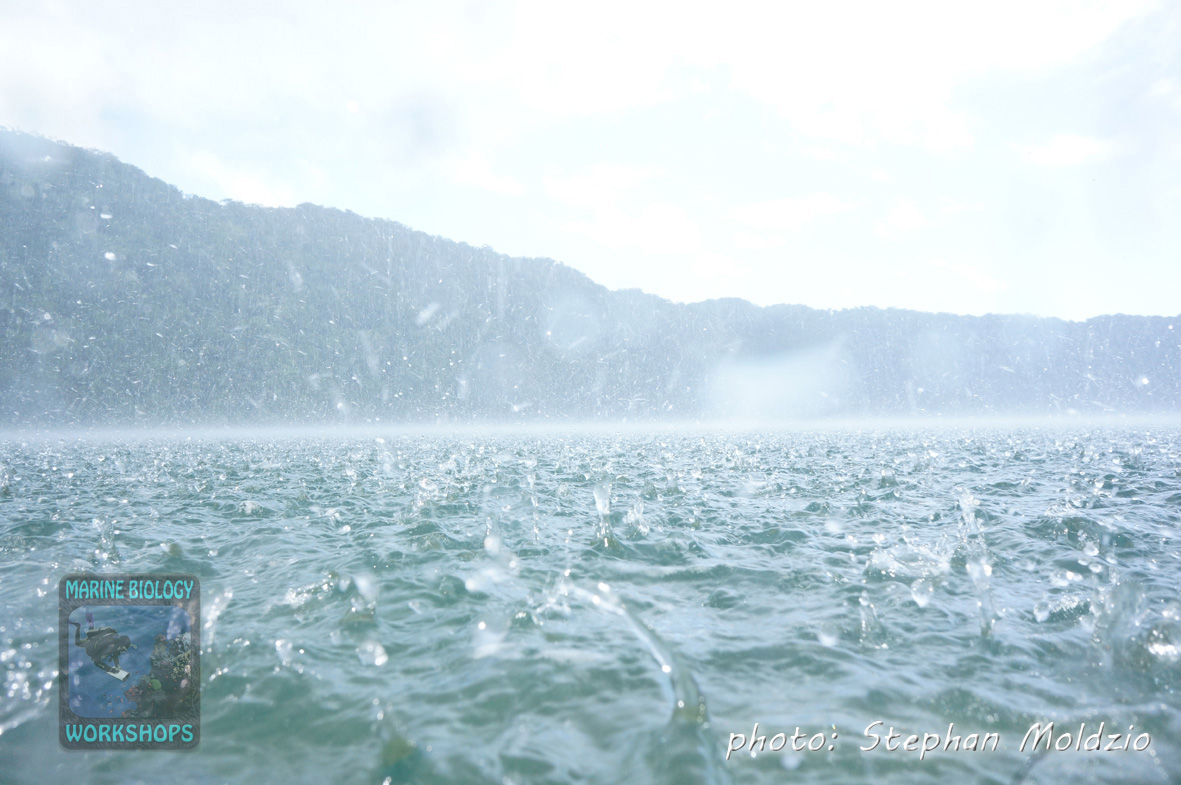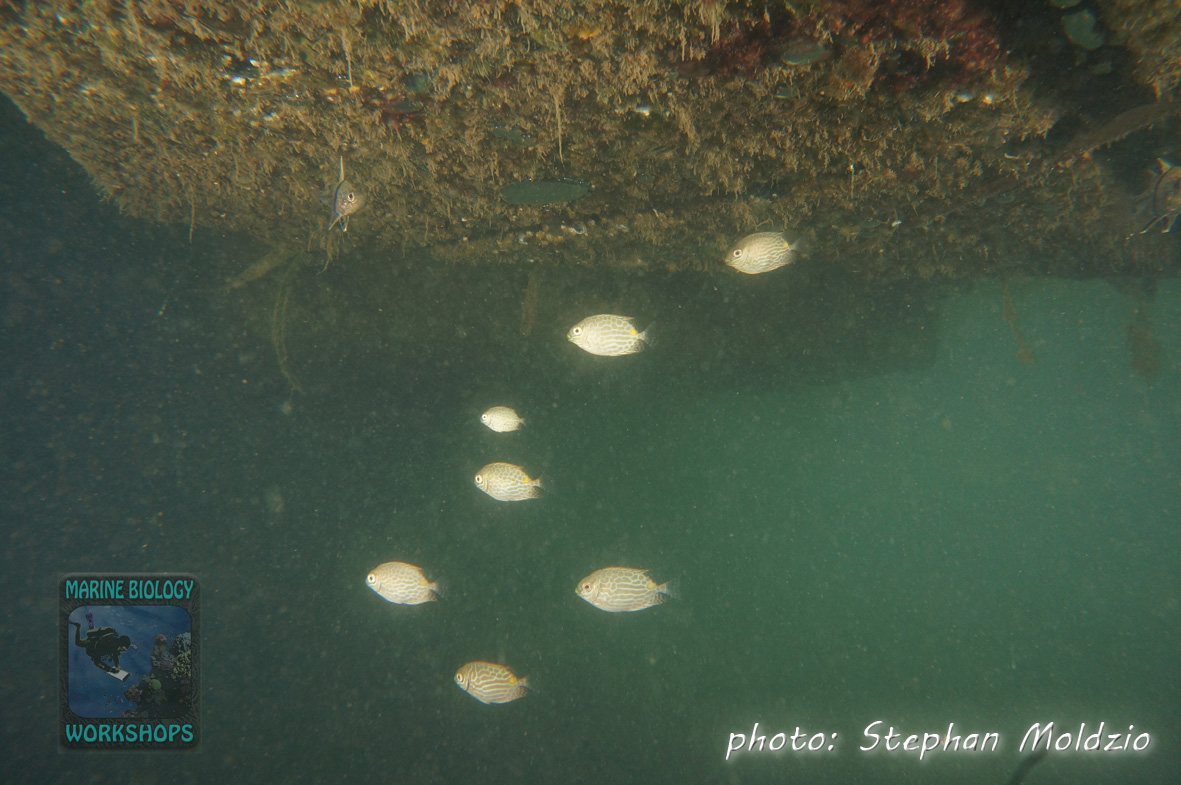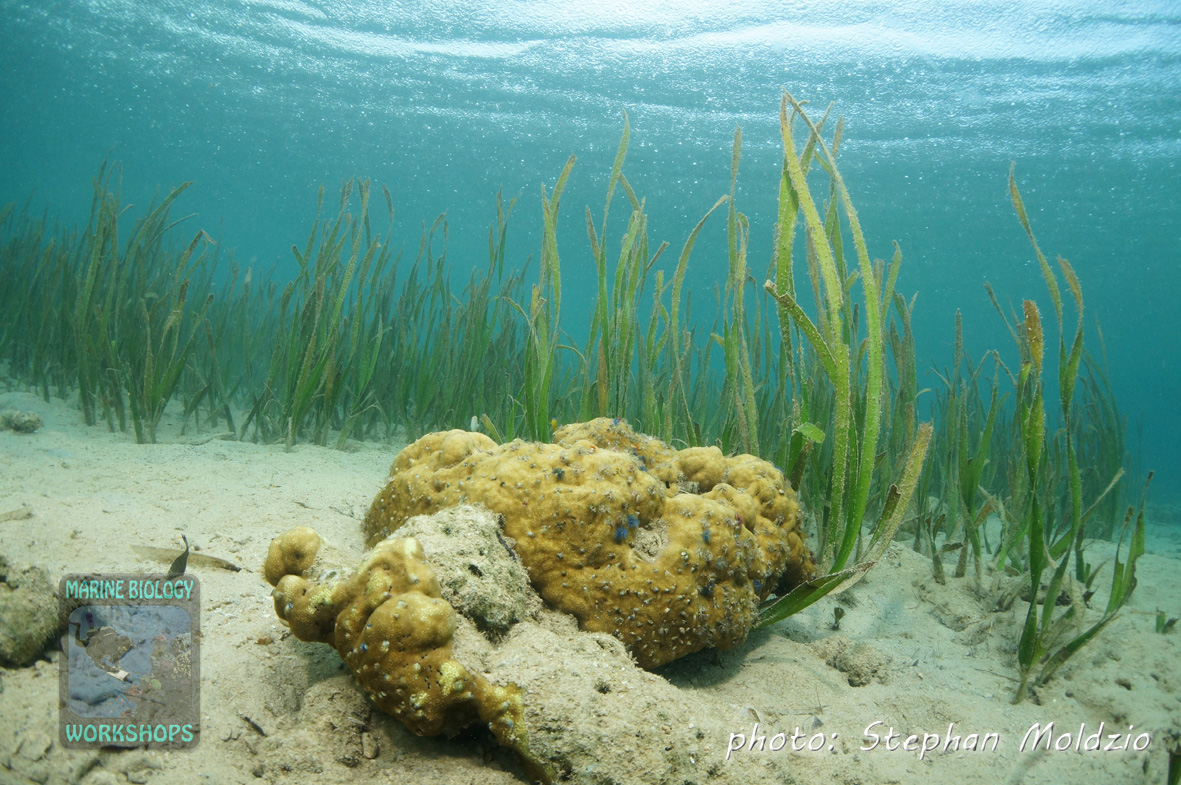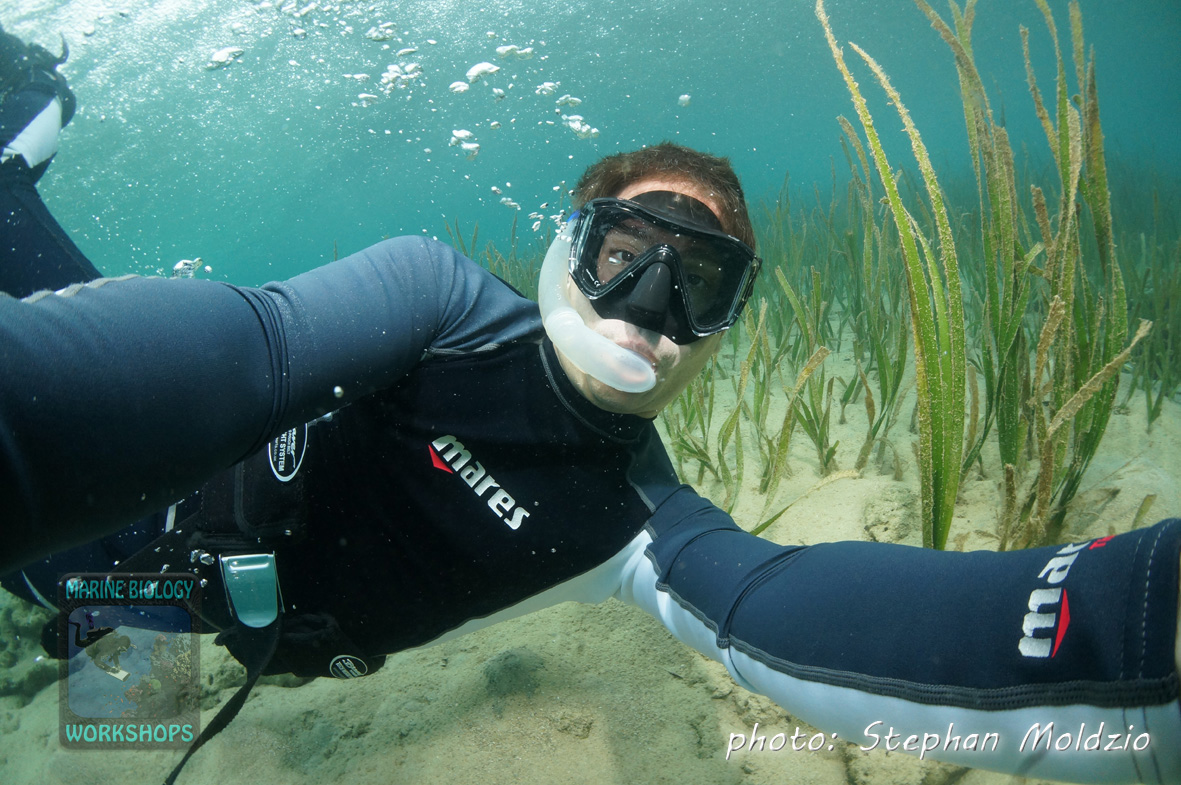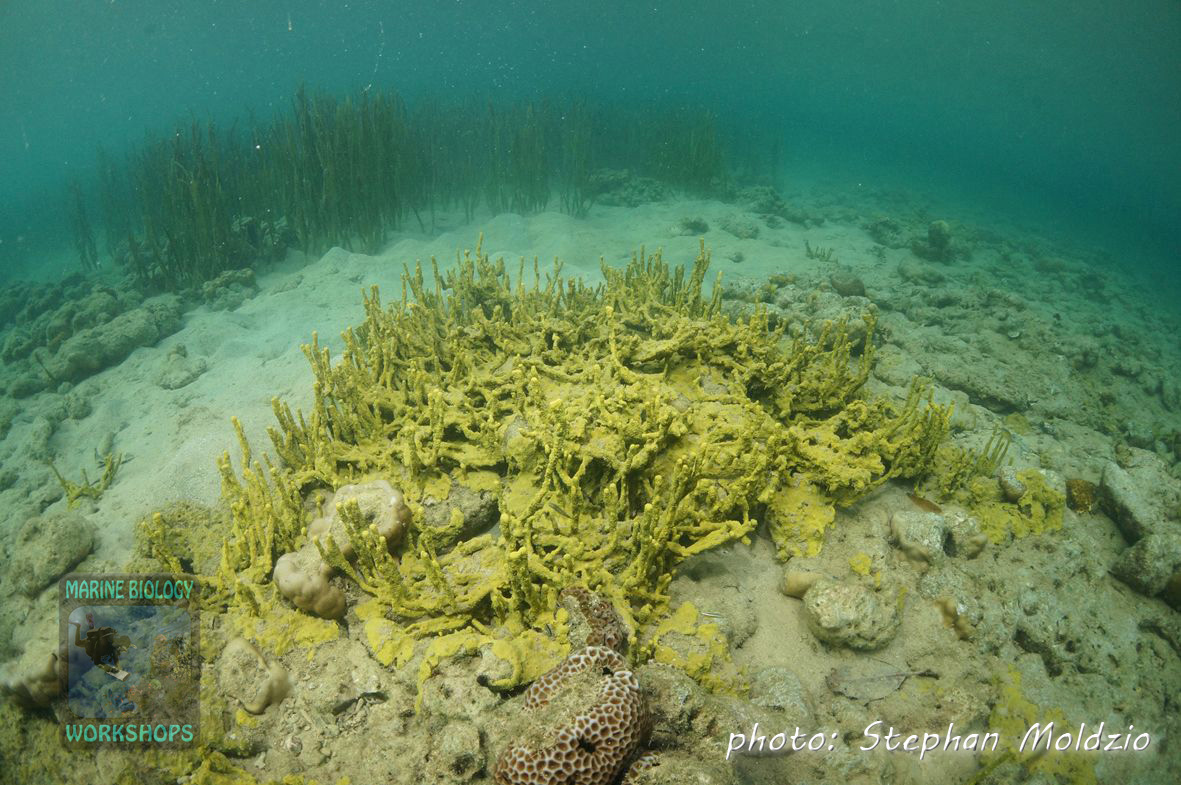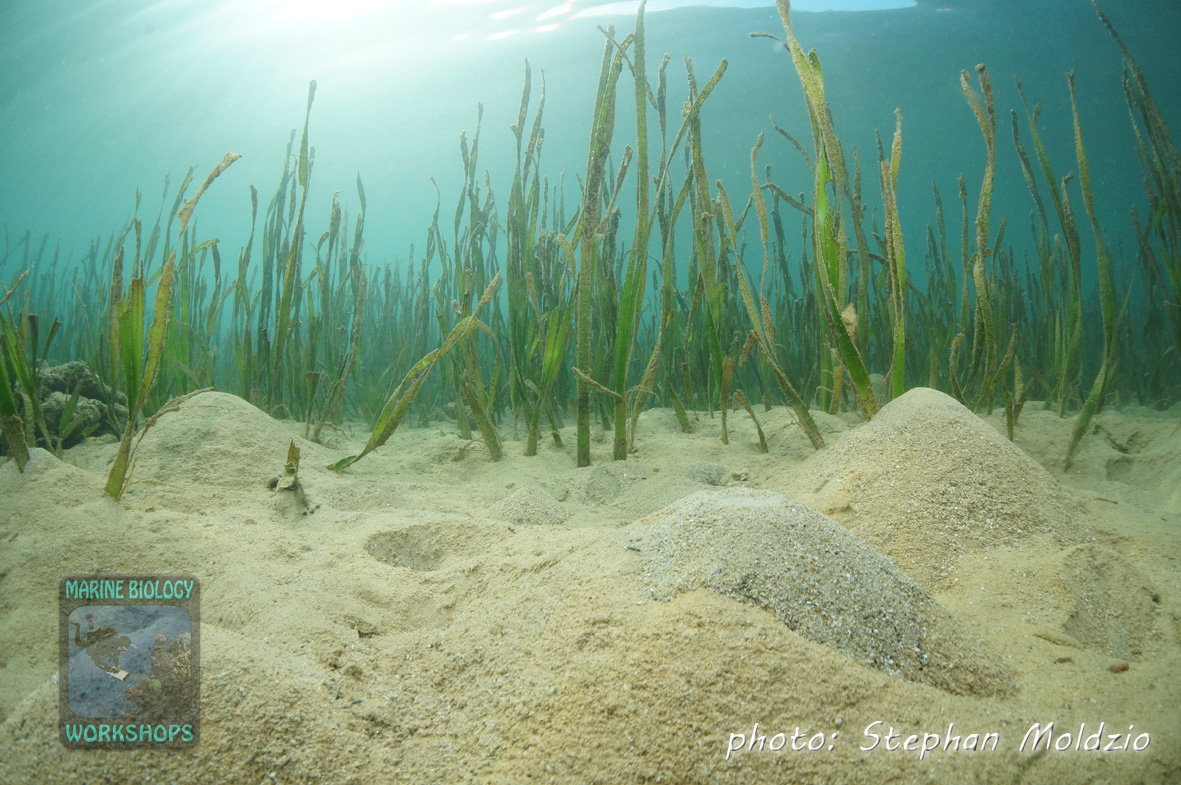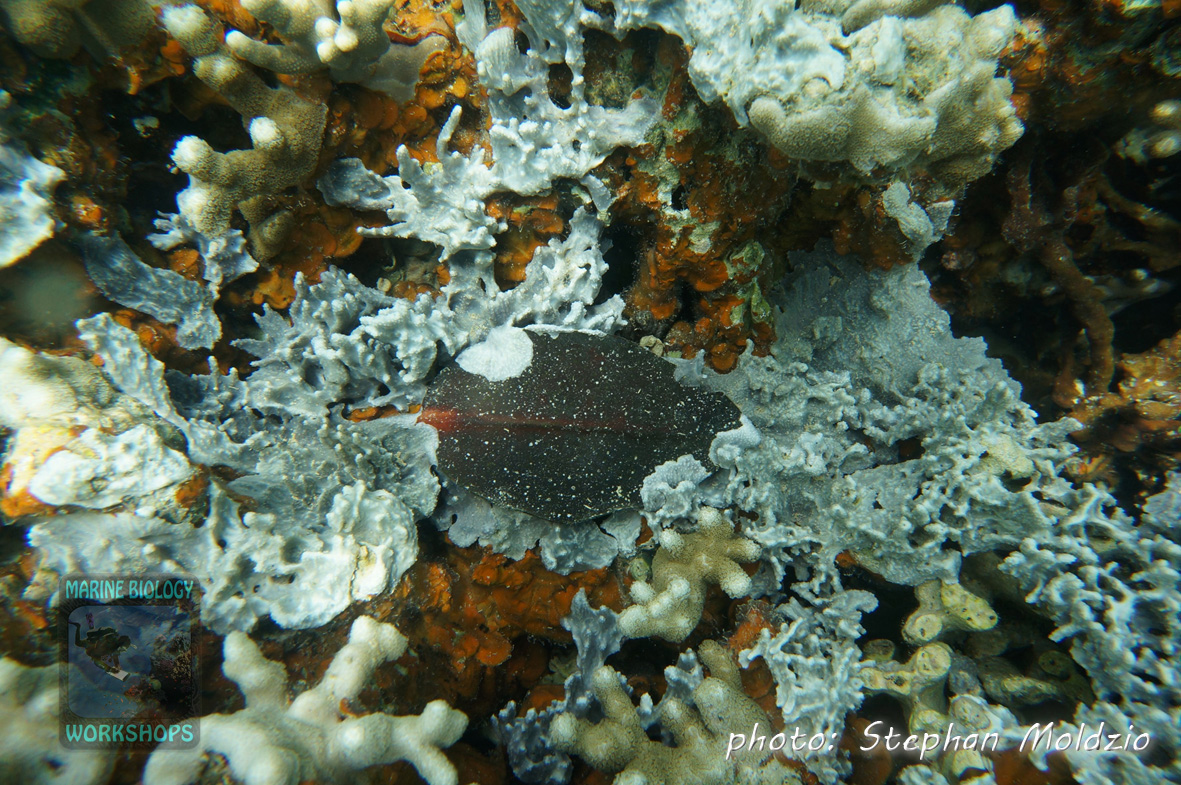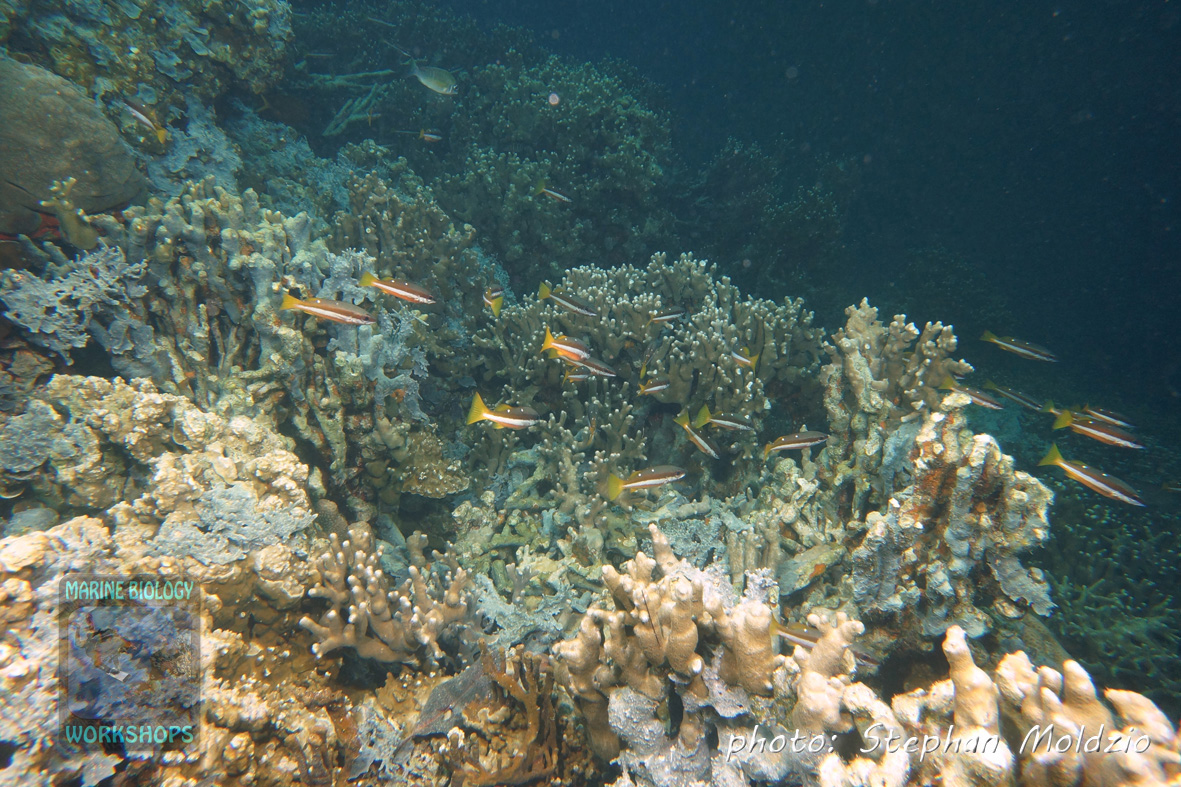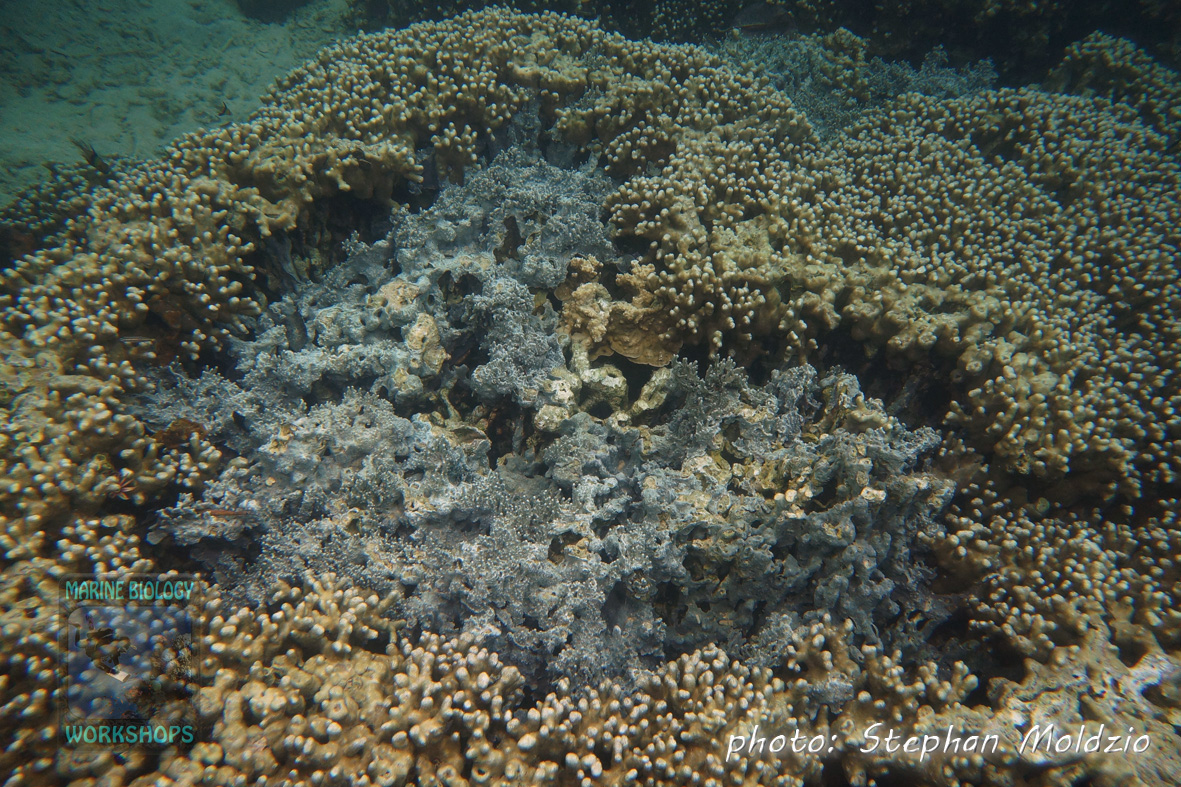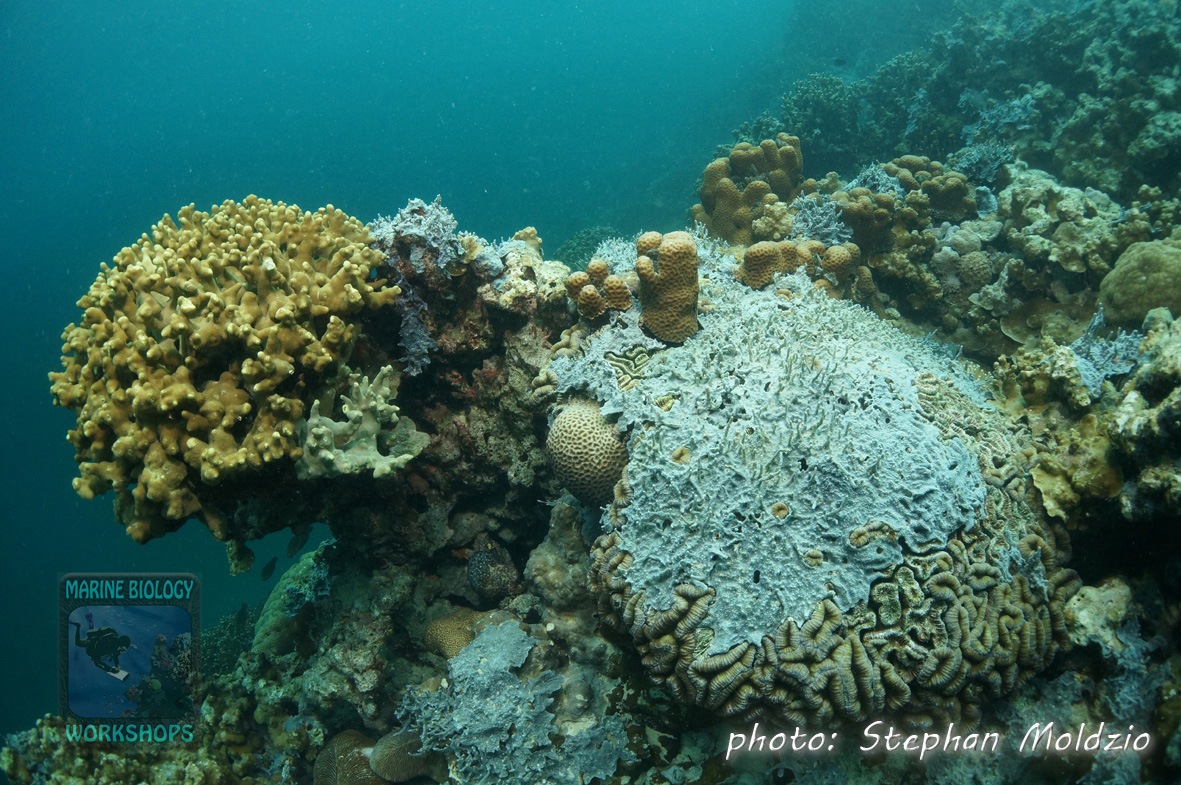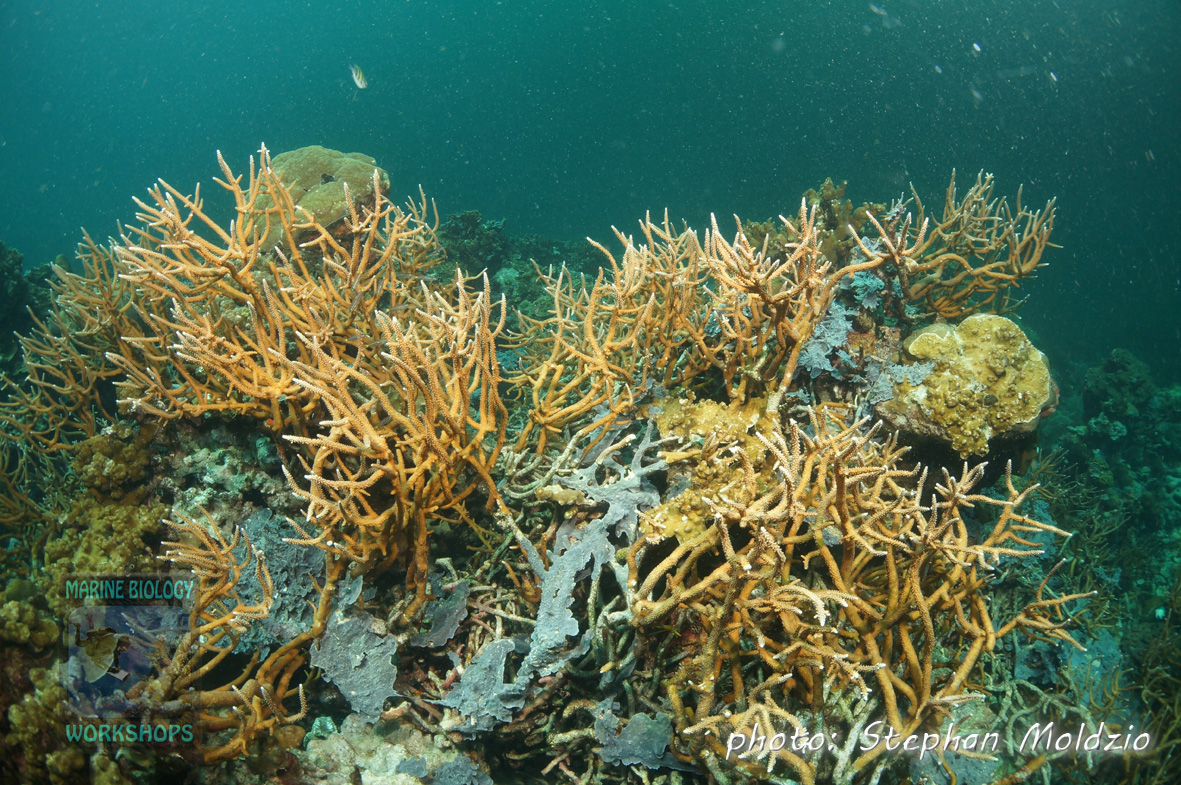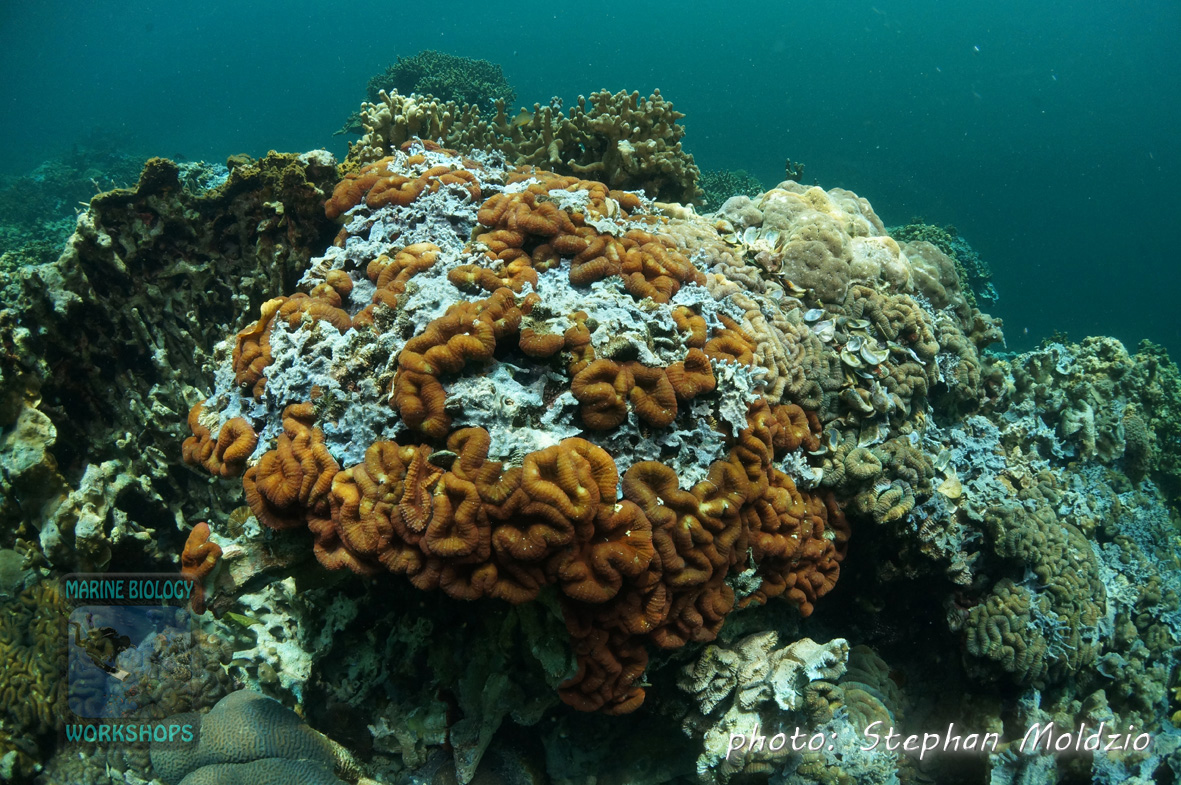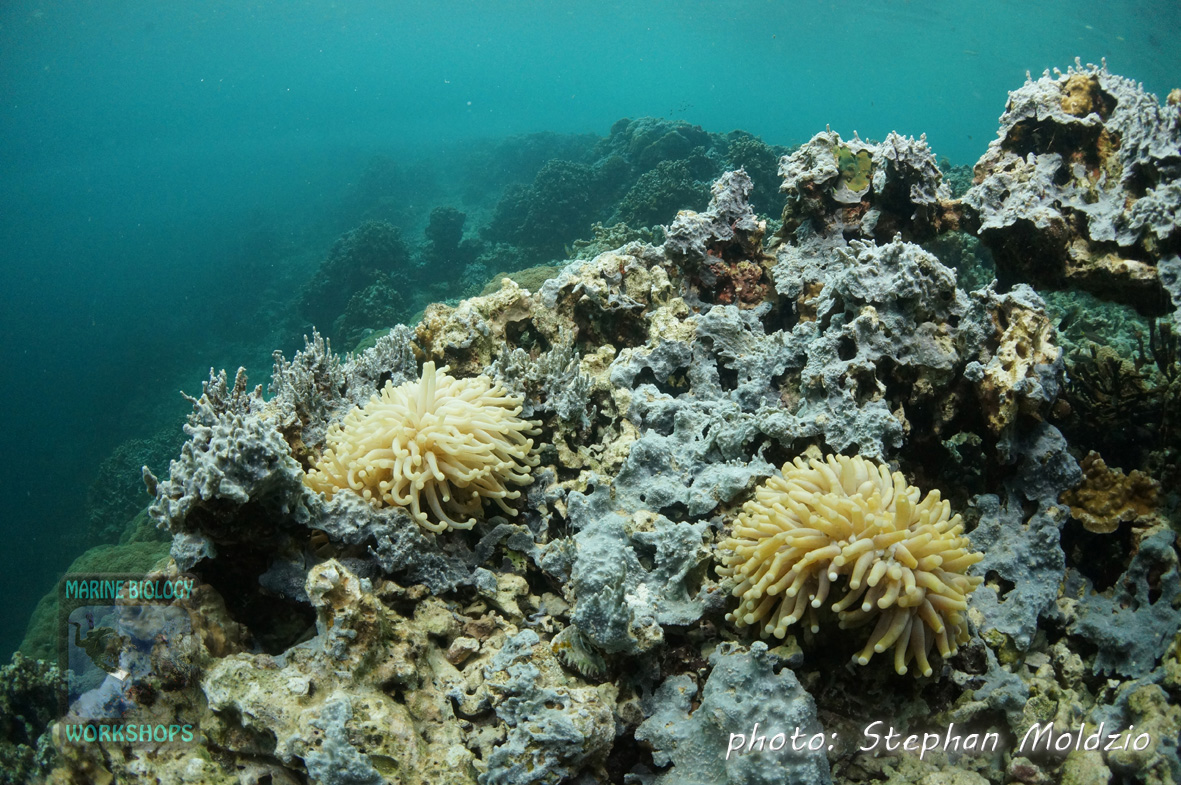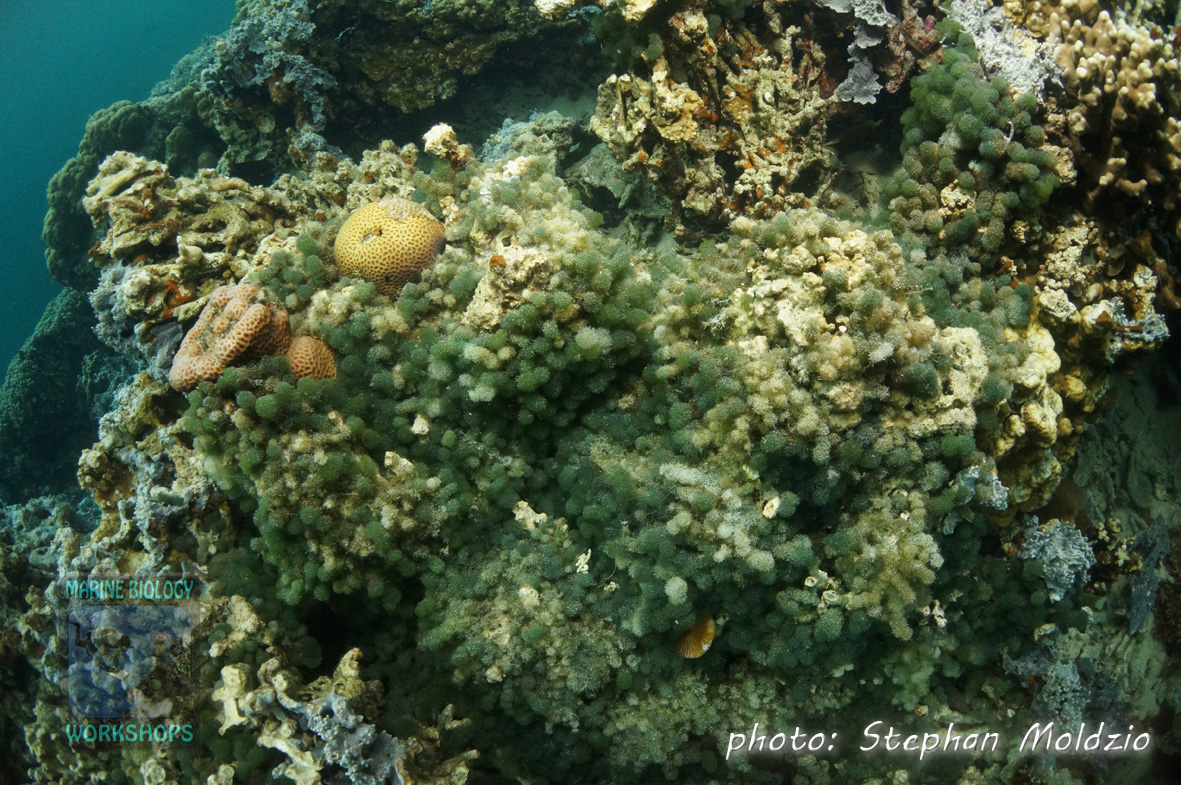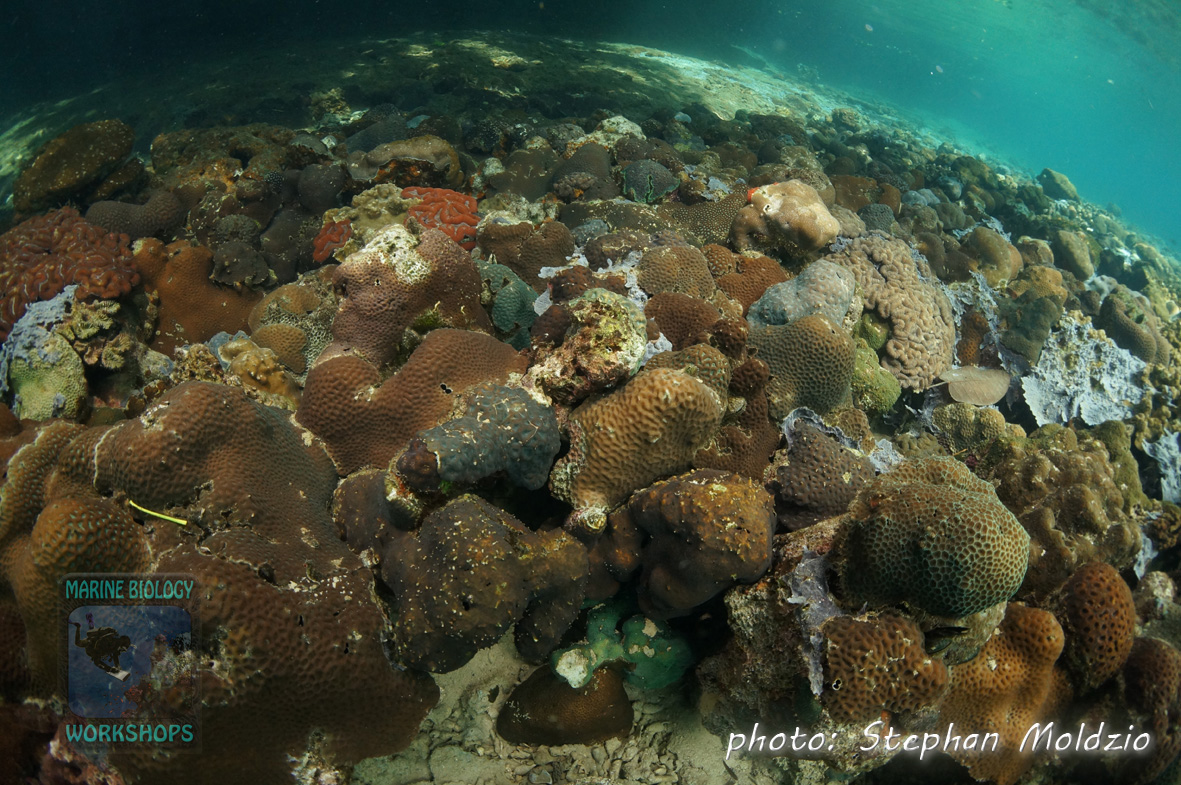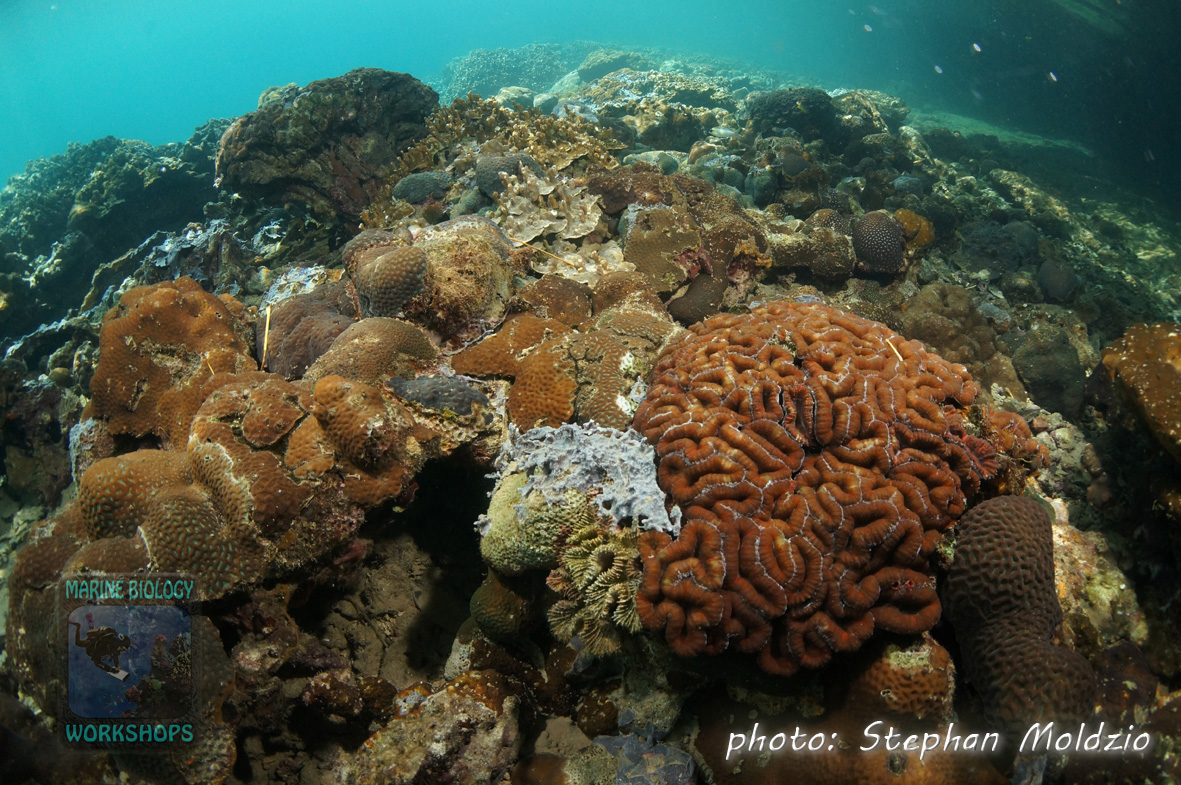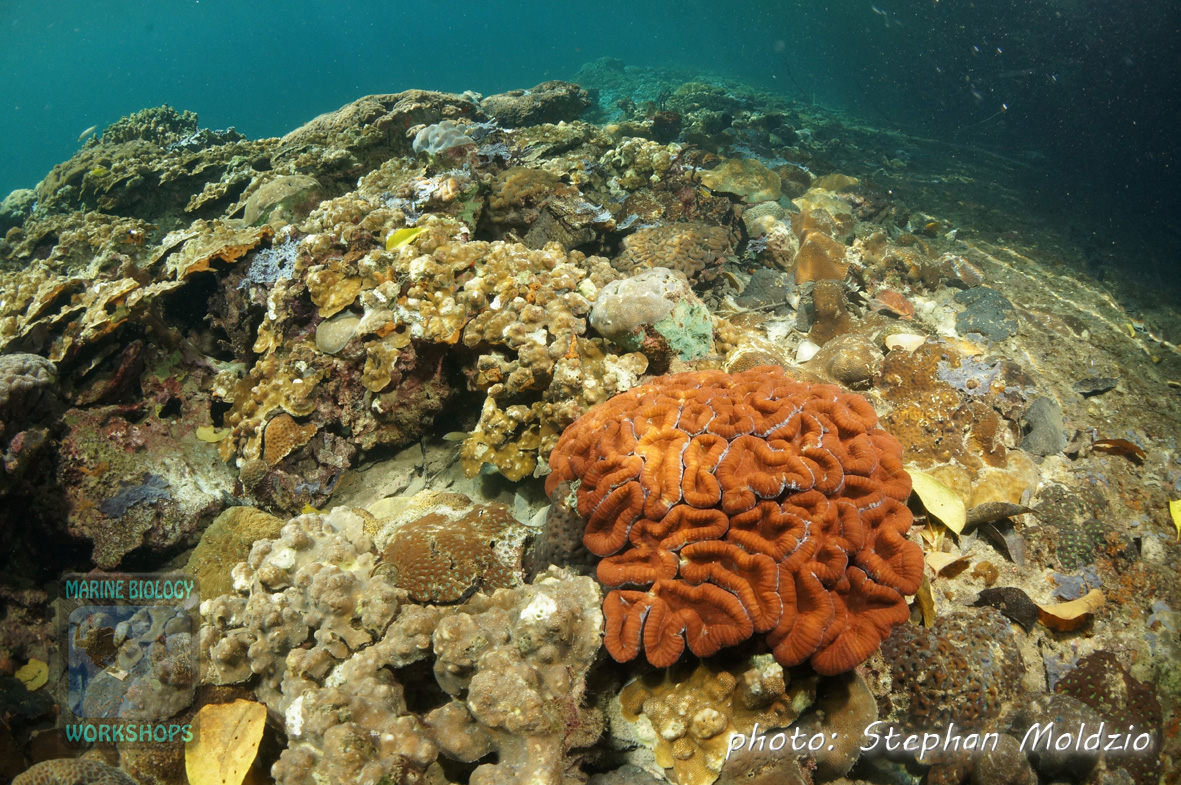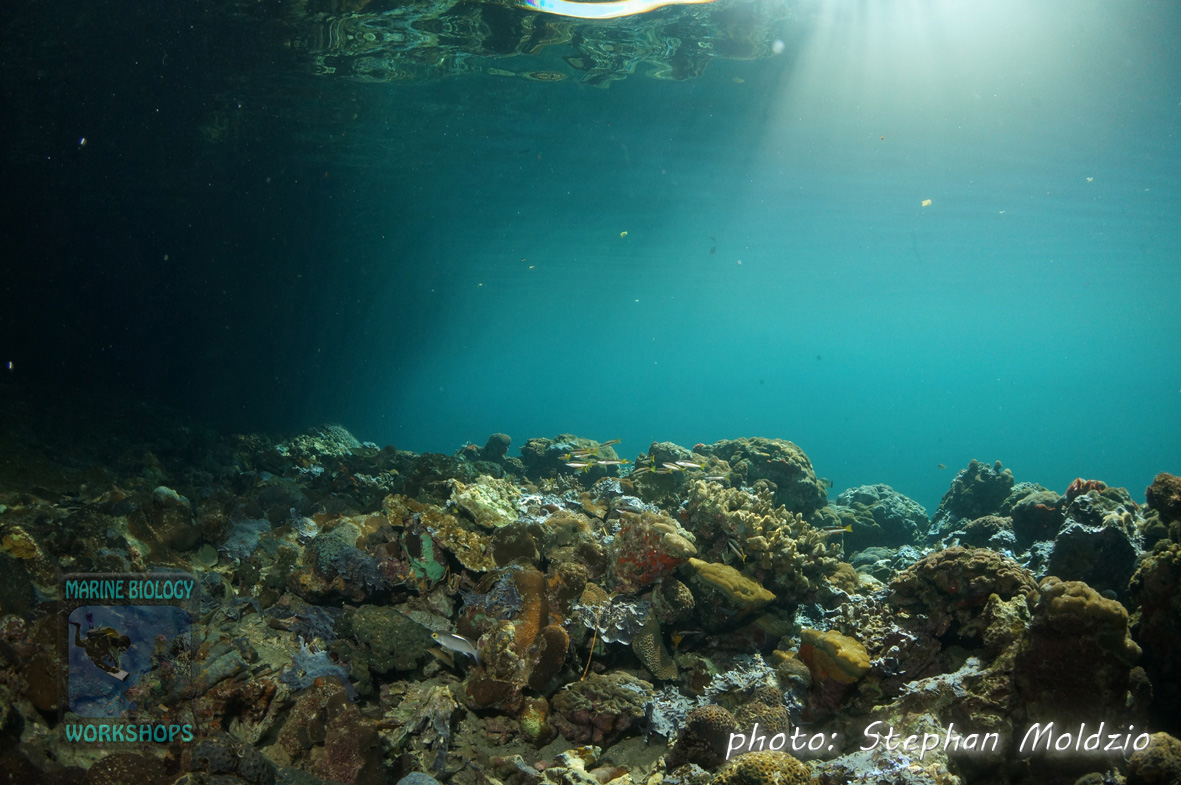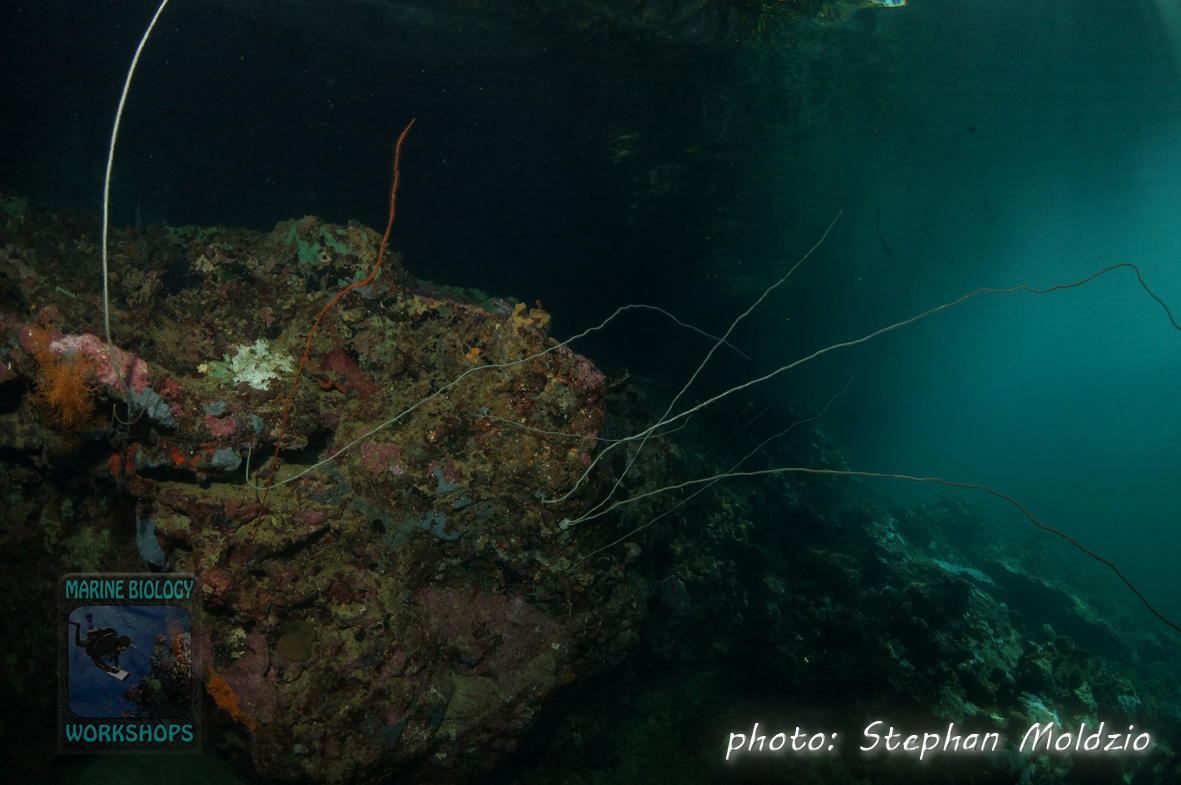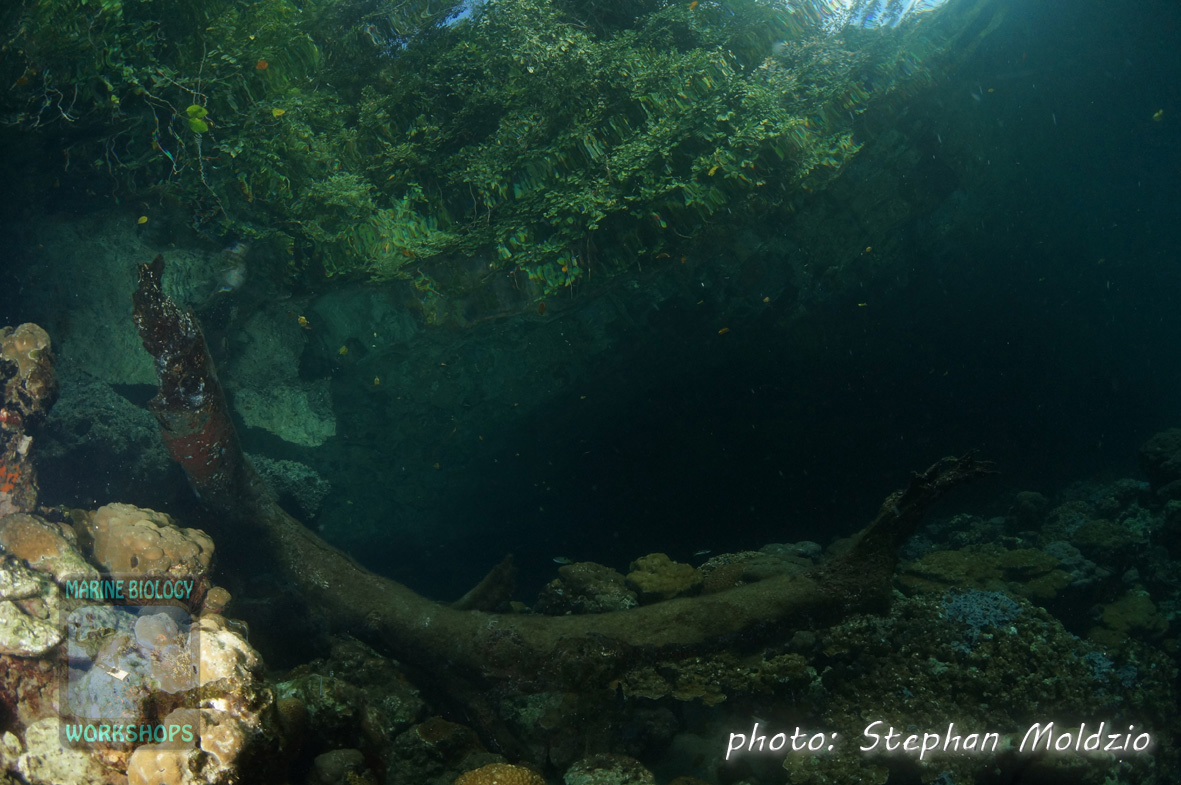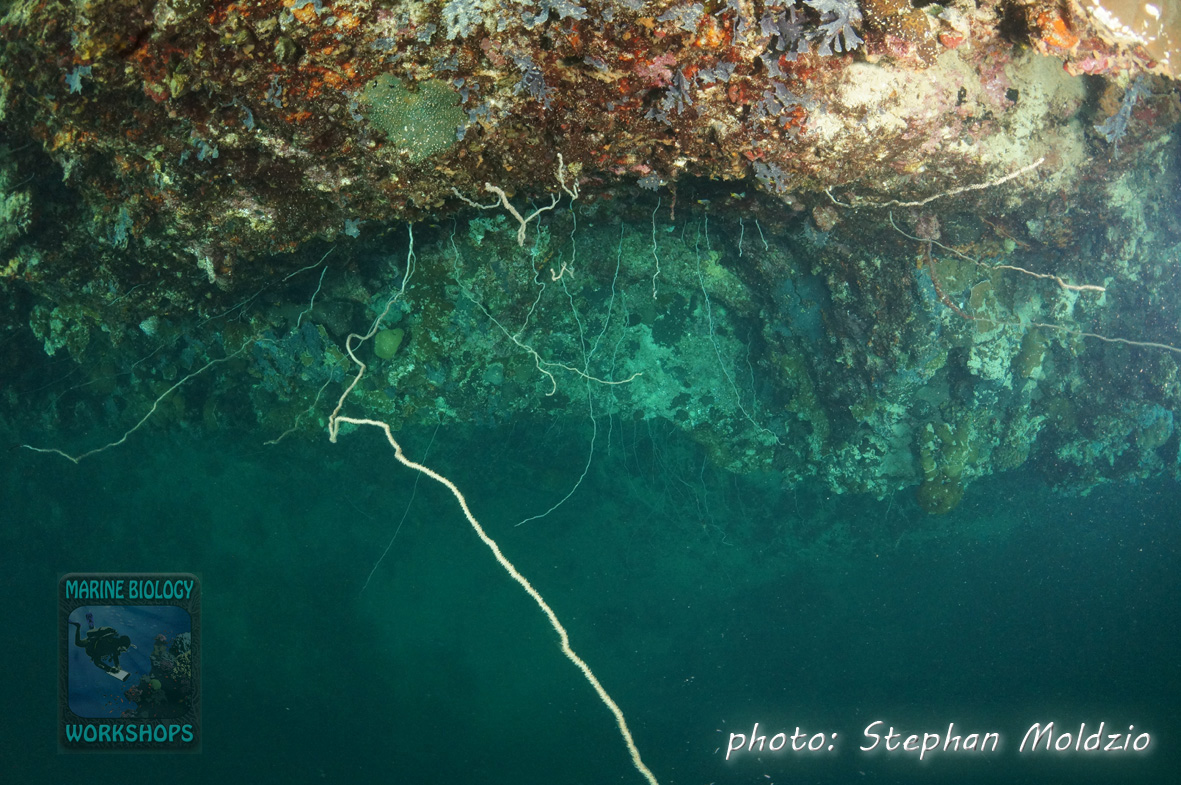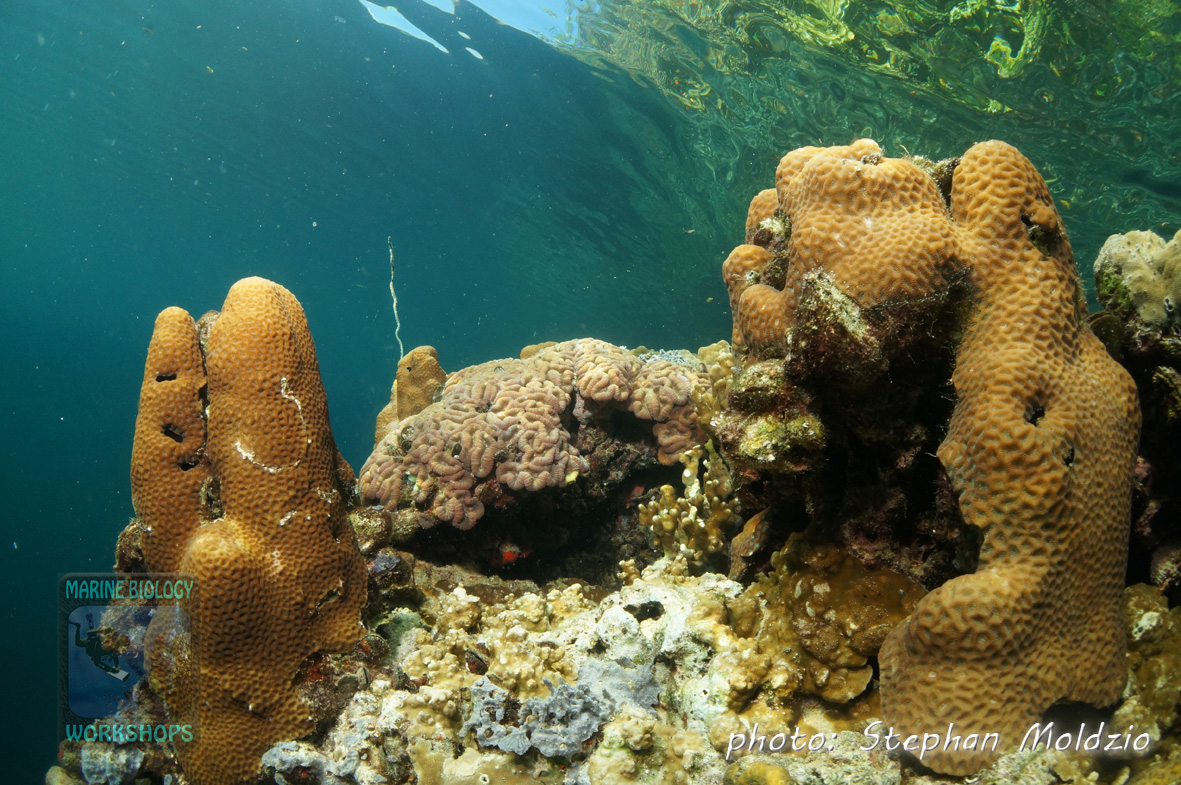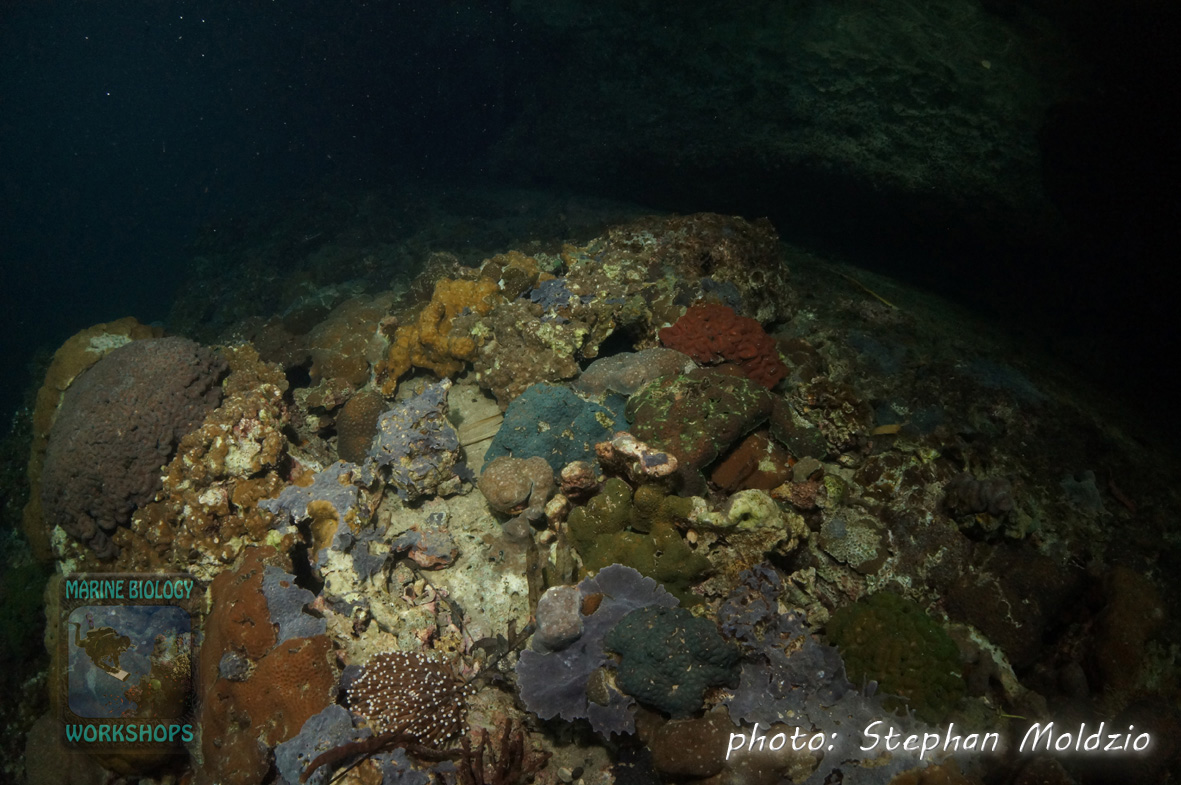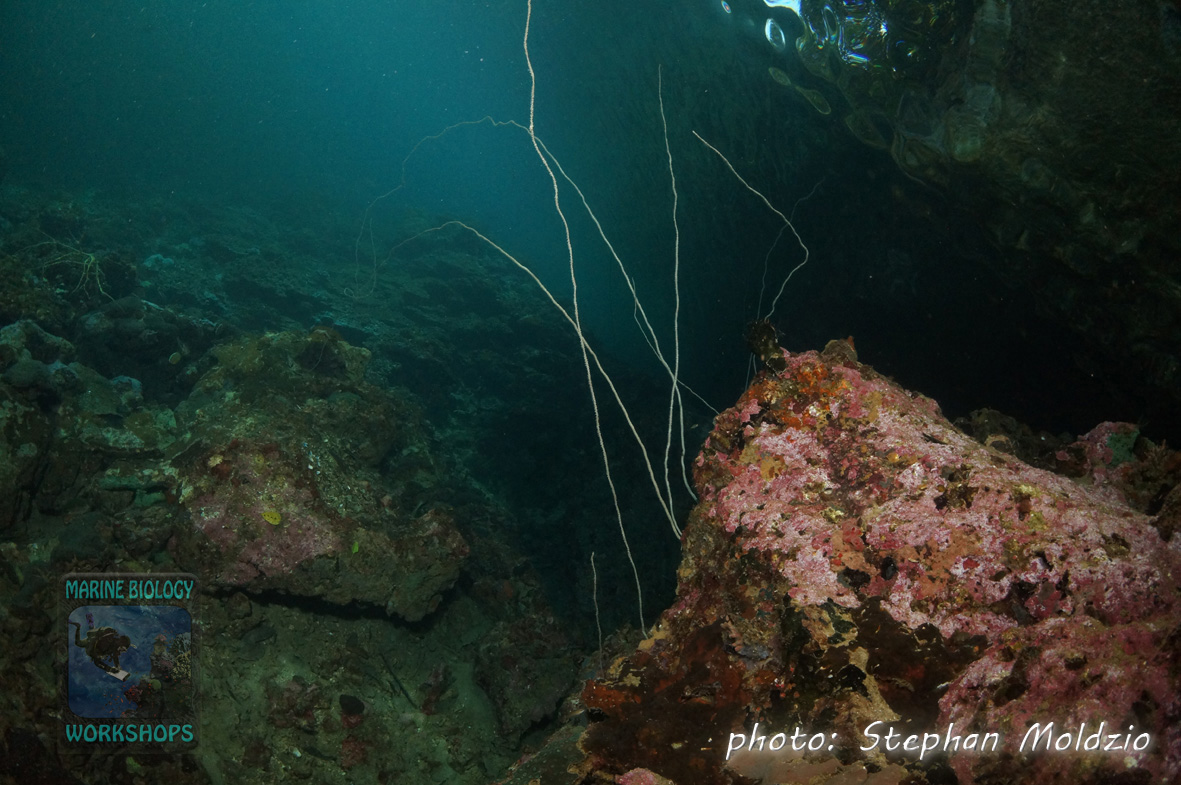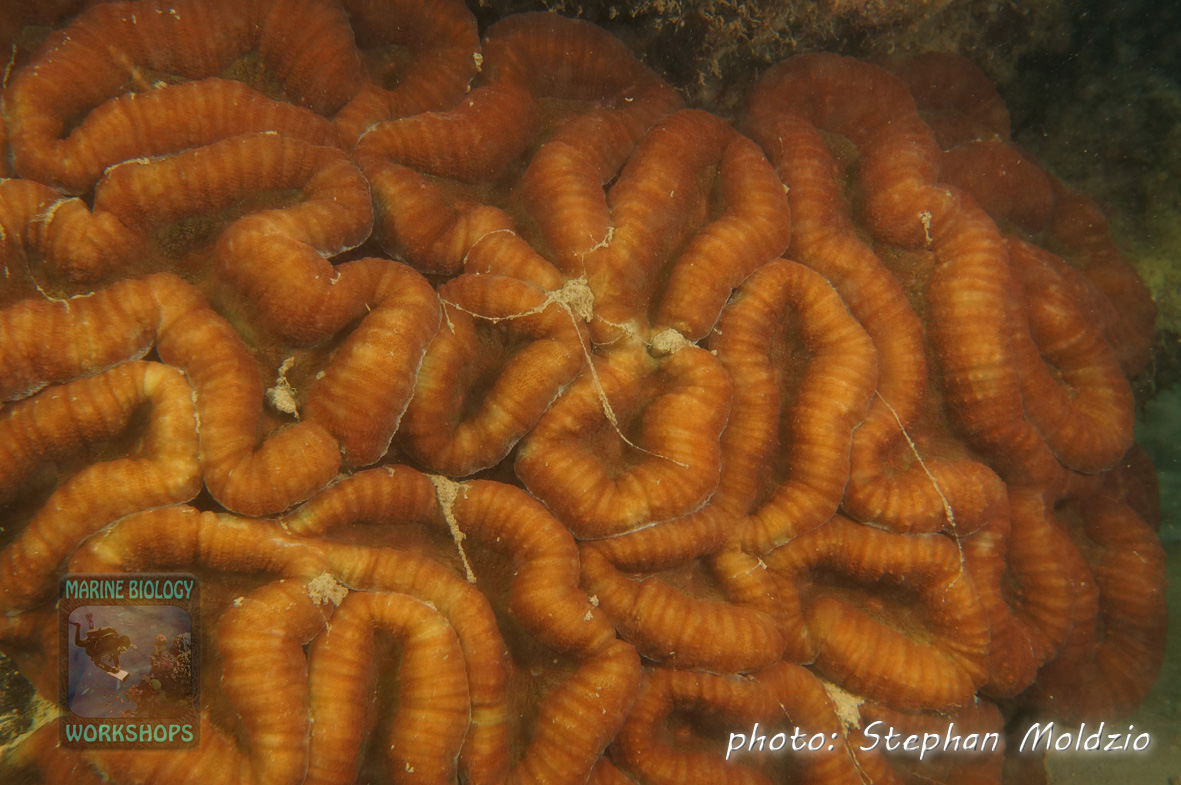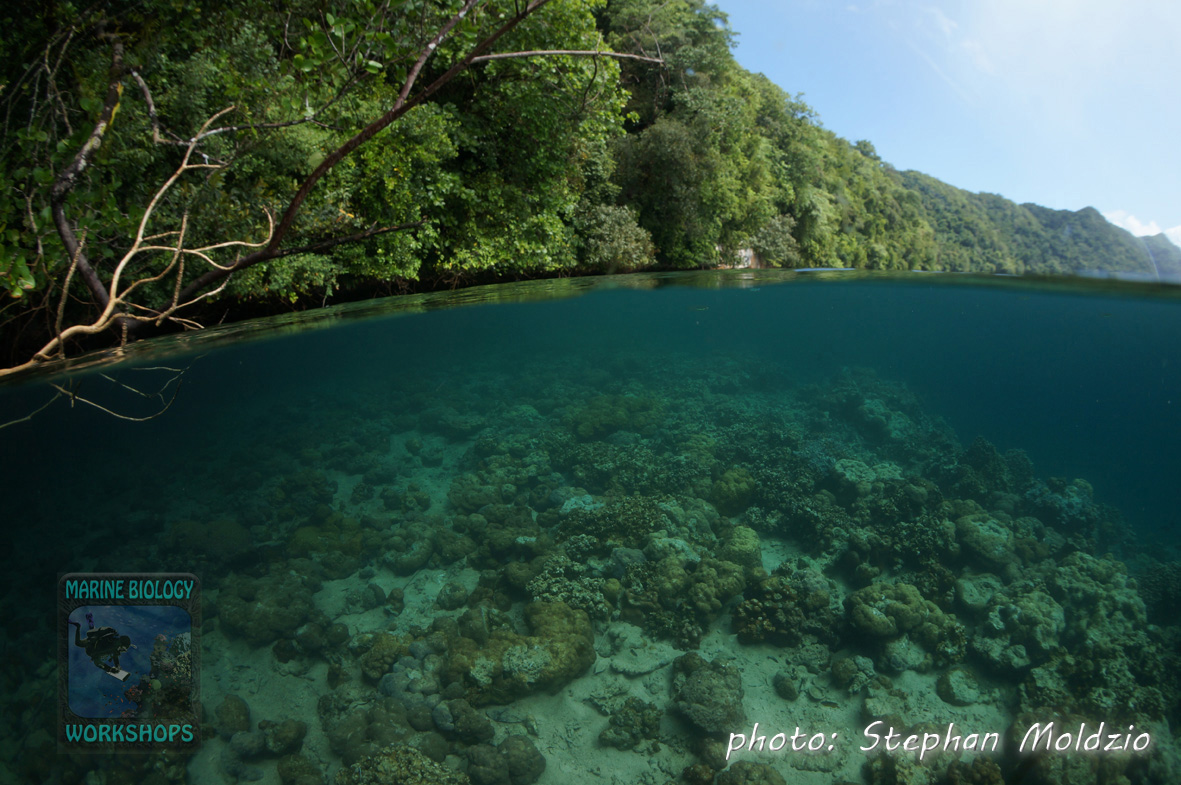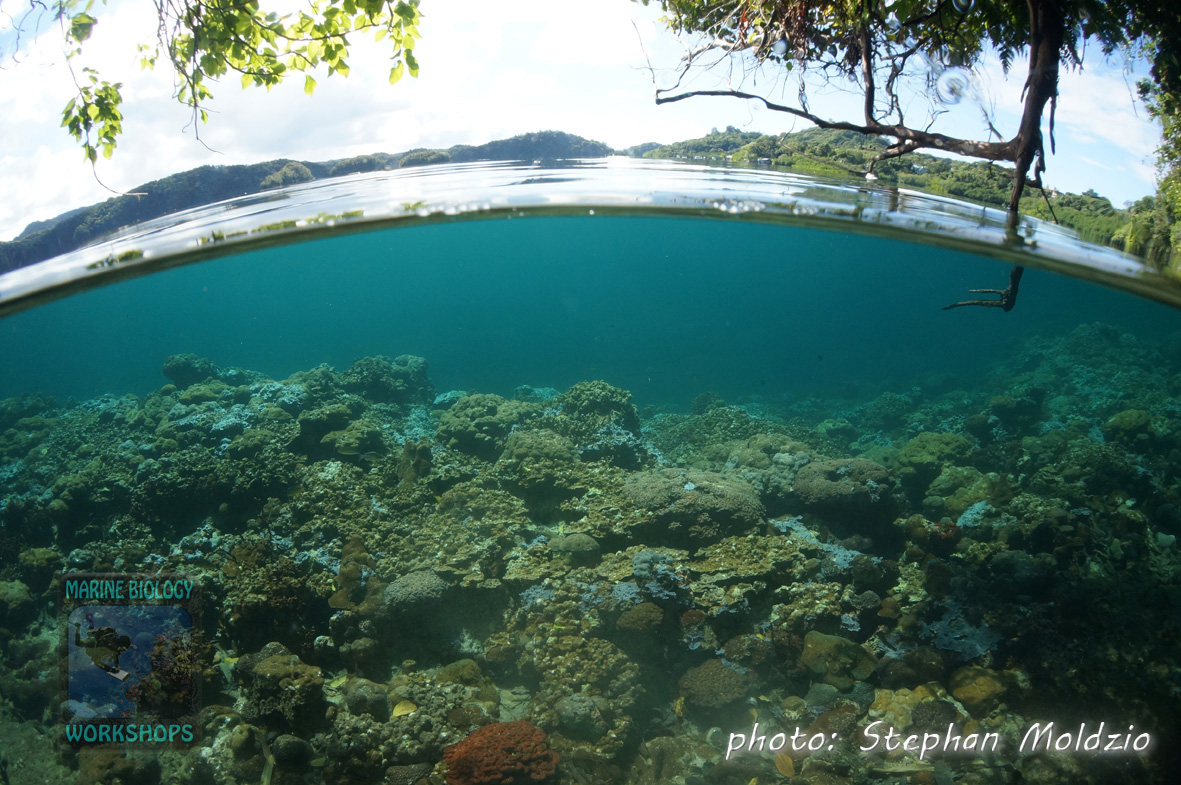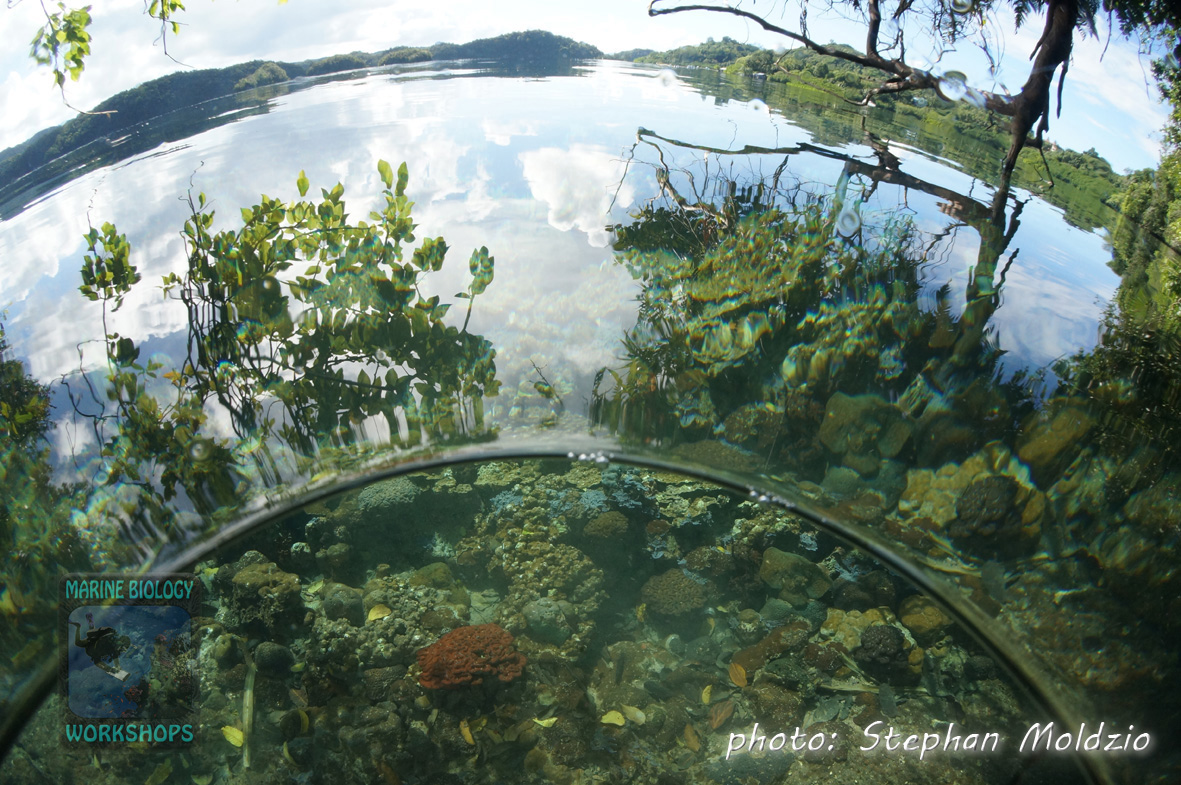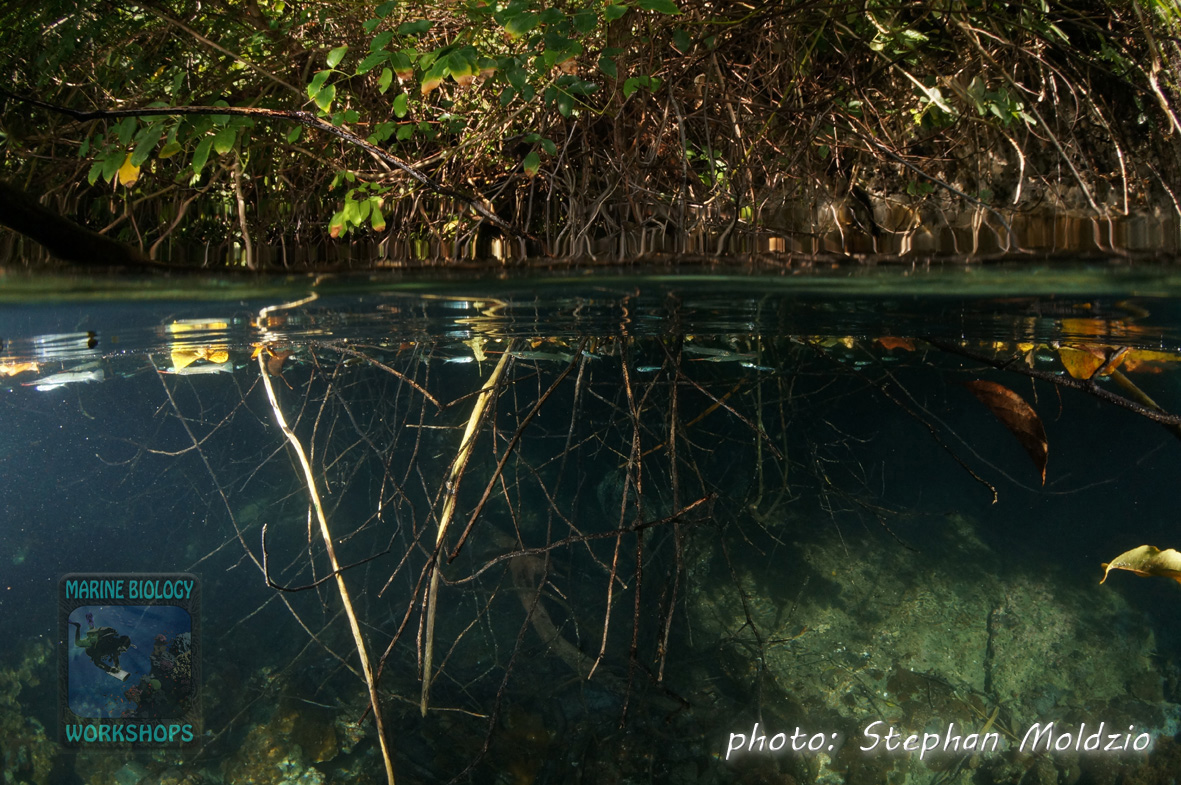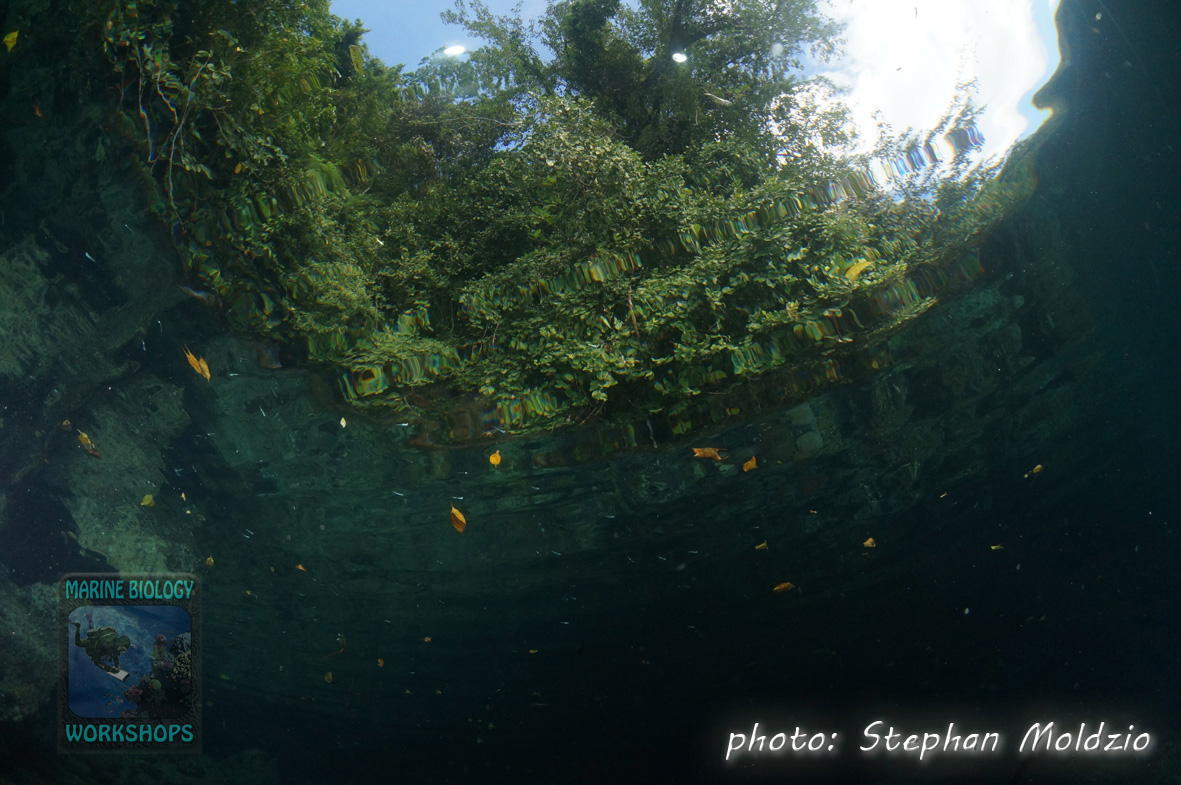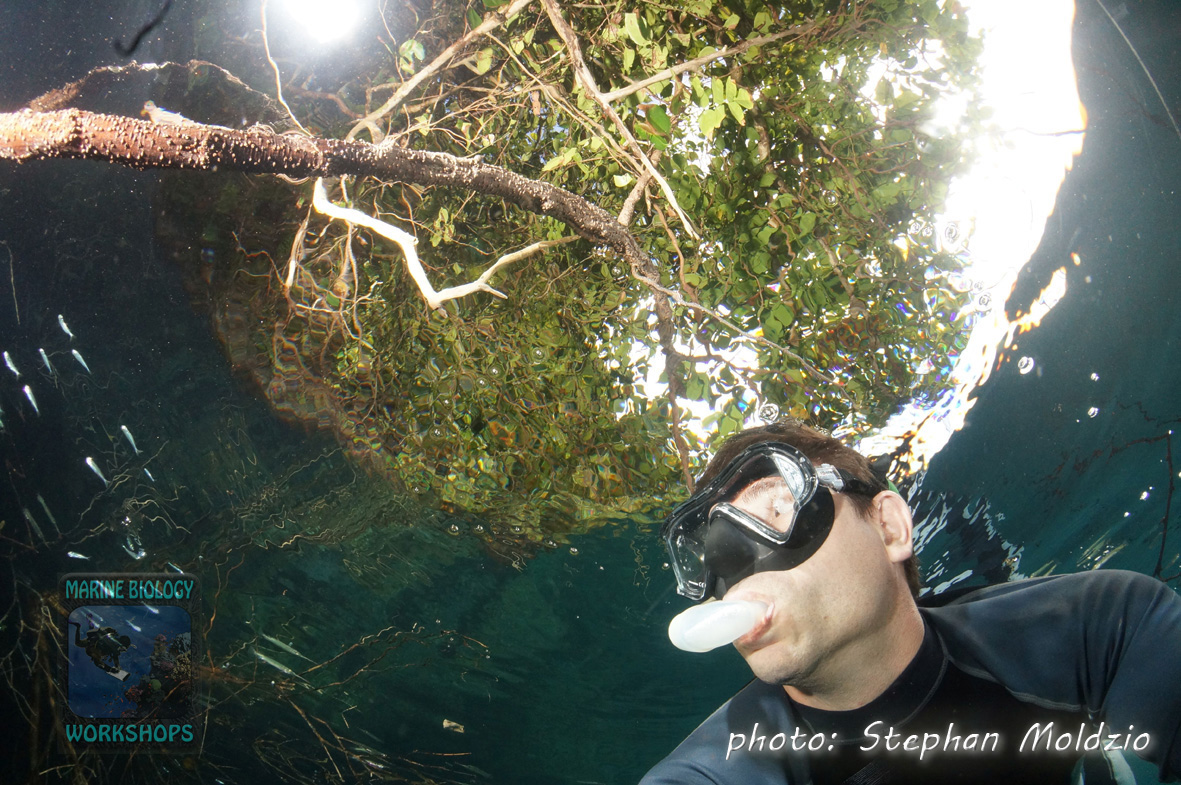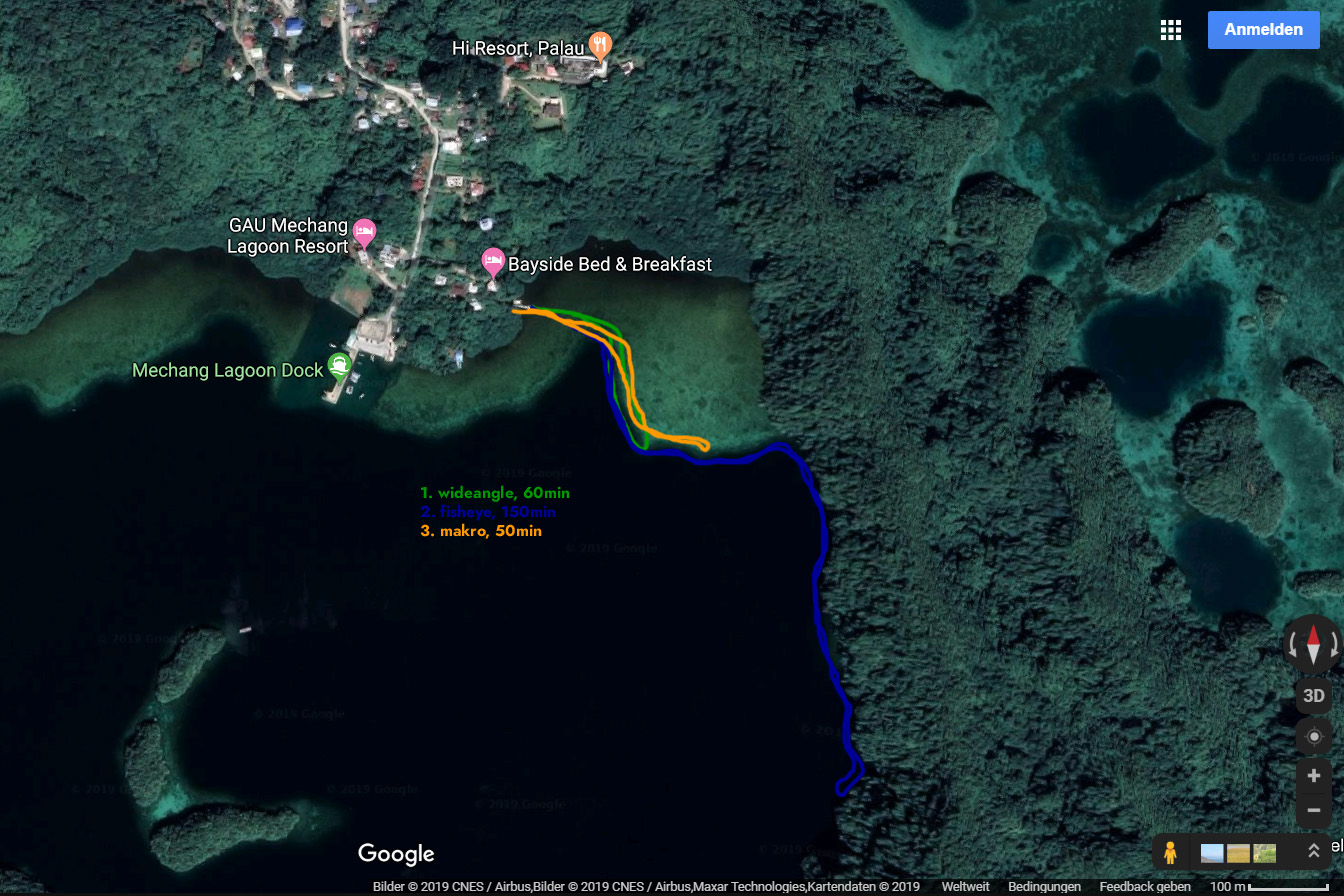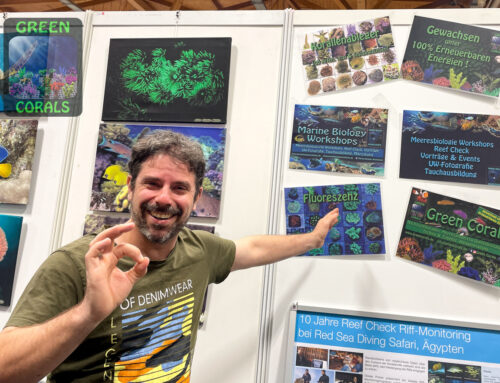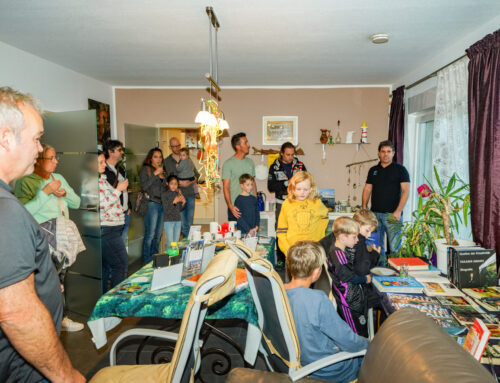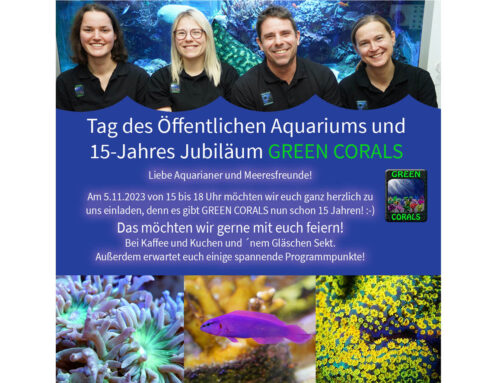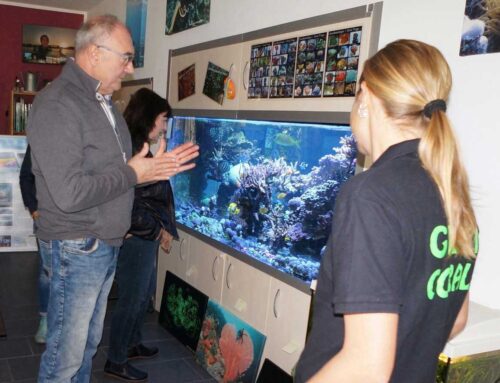Due to the very special environmental conditions, the sheltered and almost isolated location with only two small connections to the sea, a very special reef community has developed and it is obvious that Ngermid Bay is a unique habitat.
The mangroves and vegetation of the Rock Islands provide a large input of organic matter which is broken down into inorganic nutrients by various invertebrates, microorganisms and ultimately bacteria. These bacteria and micro-zooplankton form the basis for a thriving community of sponges and other filter feeders such as clams, tube worms, barnacles and hard corals. This high nutrient content, combined with an apparently very low water turnover, makes this reef a sensitive and fragile environment that needs to be protected. The whole labyrinth of bays within Nikko Bay resembles a giant aquarium, and over thousands of years this amazing reef community has developed.
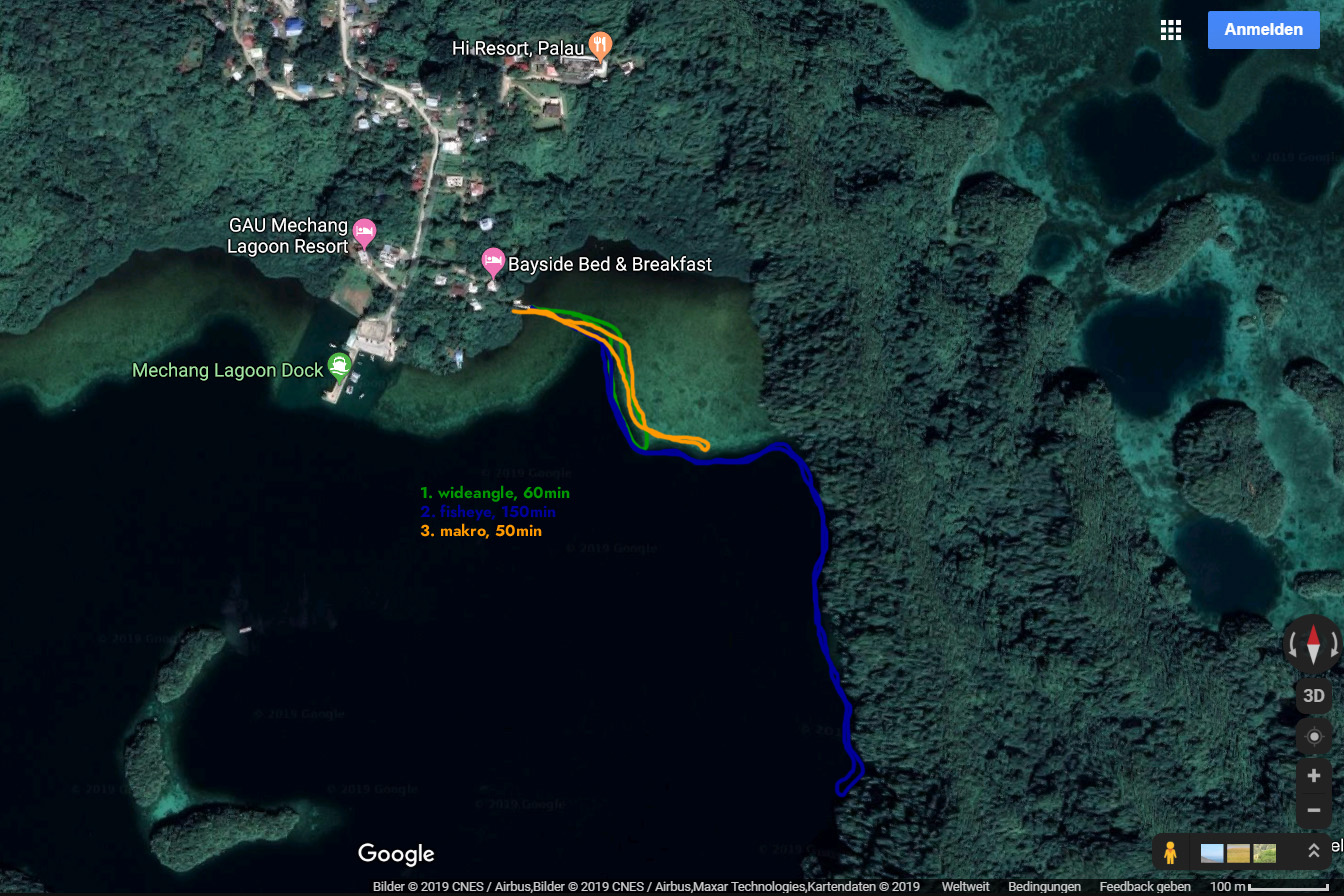
After the first snorkelling trips at Long Island Park and Ngaremeduu Bay Conservation Area on 20 and 21 October, I visited the Coral Reef Research Foundation in Koror, the leading coral reef research facility in Palau. After a guided tour and an introduction to the station and its scientific work by Dr Patrick L Colin , I asked him for a good place to go snorkelling nearby. He gave me a tip and put me in touch with local resident Cliff Terry, whose jetty was a good base from which to enter the water.
I cycled to this pristine spot (unfortunately there are almost no bicycles in Palau, even though the country is a leader in marine conservation…), and the ride on the main road from Koror was the most dangerous part of this excursion…
From the jetty, I made three snorkelling trips to document the marine life here, interrupted only by short breaks to change the battery and camera lenses, a total of 260 minutes in the water until just before sunset:
- Wide angle tour 60 min
- Fisheye tour 150 min
- Macro tour 50 min
Just a brief summary of what you can see in these pictures:
- Transition mangroves – seagrass meadow – reef slope
- Strong competition between corals and sponges, lots of algae and mussels
- Transition from mangroves to mudflat, seagrass meadow and reef.
- In general, there is a lot of competition for space between hard corals and sponges, and a lot of reef erosion by sponges.
- Up to the eastern corner of this triangular bay in the reef (see map) there was nothing particularly unexpected – mainly Porites spp. hard corals in various growth forms from branching to massive, competing for space with sponges, but also mussels, tube worms and algae. All caused by the decomposition of mangrove leaves and the resulting nutrients, bacterio- and microzooplankton.
- Beyond the corner of this bay, however, there was an increasing variety of stony corals, mainly LPS (Large Polyp Scleractinians) of various genera: Lobophyllia, Favia, Favites, Acanthastrea, Montastrea, Goniastrea, Platygyra, Goniopora, Hydnophora, Fungia, Ctenactis, Heliofungia, Zoopilus and surely many more.
- There are also some SPS (Small Polyp Scleractinian), mainly Porites spp. and some Pocillopora and Anacropora colonies, as well as two species of Acropora, which occur mainly in nutrient-poor conditions, as on the outer reefs.
- In addition to this diversity of LPS hard corals, it was also noticeable that there were virtually no soft corals. Perhaps this is due to the almost complete absence of currents, as soft corals rely on the movement of the water to carry their tiny food, mainly phytoplankton, directly into their feathery tentacles?
Stony corals, on the other hand, can actively paralyse and eat larger zooplankton at night with their tentacles and stinging venom.
“Coral Wonderland”
- Large polyp stony corals, sea whips, black corals
- Nursery for bumphead parrotfish, napoleon wrasse and reef sharks
- Finally, at the edge of Rock Island, I was completely stunned…….. an absolutely breathtaking wonderland of various LPS corals as well as two different species of sea whip and black coral, normally found in mesophotic reef zones or under extreme current conditions. Here at a depth of only 3-5 metres.
- So far we have been talking about corals …., not to mention all the mostly juvenile fish of various families, e.g. whiptail breams, snappers, angelfish and butterflyfish, parrotfish and wrasse, rabbitfish and surgeonfish, and of course the ubiquitous damselfish, cardinalfish, blennies and gobies.
- Particularly noteworthy were the numerous schools of juvenile bumphead parrotfish (Bolbometopon muricatum) of all sizes up to several sub-adults, as well as several juvenile Napoleon wrasse (Cheilinus undulatus), including a sub-adult or sexually mature female. Not to mention the rare eight-banded butterfly (Chaetodon octofasciatus). A 1.5 metre long whitetip reef shark (Triaenodon obesus) passed by on the edge of the rock island.
- I didn’t see the local 3 metre long saltwater crocodile (Crocodylus porosus), but it certainly caught my eye…..
Unfortunately, in many cases I had the “wrong” lens (fisheye or wide angle) to document the fish… the macro tour, which would have been suitable for documenting the fish, was the shortest at 50 minutes and the zoom lens was not used due to time constraints.
So during the macro tour I concentrated on the invertebrates, which are sessile or slow moving, and on the corals.
And on the wide angle and fisheye tour I concentrated on documenting this very special habitat.
When it wasn’t raining, the water was so shallow that the vegetation on the rock island could be photographed through the surface. The fisheye lens made for some really amazing photos.
Many thanks to Cliff Terry for his support and the provision of his infrastructure and to Dr Pat Colin of the Coral Reef Research Foundation for the tip to visit this unique and amazing place!
